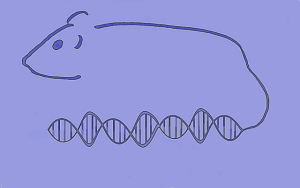by
Gus Iversen, Editor in Chief | March 13, 2015
Lawrence Berkeley National Laboratory research may shed new light on the mystery of how individuals will react to low-dose radiation exposure. While high doses are well understood to be harmful to humans, there is increasing evidence that the effect of low-dose radiation is more complex, sometimes yielding both beneficial and detrimental outcomes.
By removing the epithelial cells from the mammary glands of a genetically diverse population of lab mice, exposing them to low-dose radiation, then implanting genetically identical epithelial cells, researchers were able to see how genes and local cells — not the tumor itself — affect tumor growth.
In the research, low-dose radiation is defined as roughly the dose received from ten full-body CT scans, or 100 millisieverts.




Ad Statistics
Times Displayed: 33271
Times Visited: 893 Stay up to date with the latest training to fix, troubleshoot, and maintain your critical care devices. GE HealthCare offers multiple training formats to empower teams and expand knowledge, saving you time and money
After 18 months of monitoring the mice, researchers at the U.S. Department of Energy lab found that low-dose radiation hadn't changed the risk of cancer in most of them. A small minority of mice was actually protected from cancer development by low-dose radiation, while another small minority become more susceptible.
In susceptible mice, the scientists identified 13 regions in their genomes that contribute to an individual's sensitivity to low-dose radiation.
"If we can identify similar genetic loci in people, and if we could find biomarkers for these gene-environment interactions, then perhaps we could develop a simple blood test that identifies people who are at high risk of cancer from low-dose radiation," said Jian-Hua Mao, lead researcher and Berkeley Lab's Life Sciences Division member.
The researchers hope their study will lead to genetic screening tests to help identify who would be better served by non-radiation therapies and imaging methods.
The research appeared in the journal Scientific Reports.

